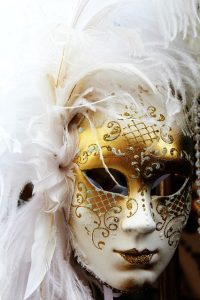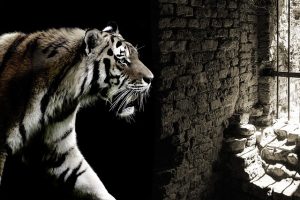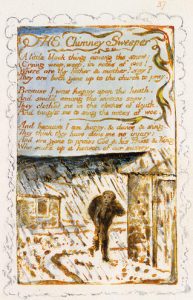Sayers’ Method of Understanding Academia
As Harriet Vane returns to Shrewsbury College and the world of academia within Gaudy Night by Dorothy L. Sayers, she becomes entrenched in a war of attrition between the college’s reputation and a figure intent on undermining it with the use of obscene language, lunatic scribbles, and public displays of destruction.
The Marriage of Science and Art in Carson’s Silent Spring
As an environmentalist, living in the 21st Century, I have come across the idea of connectedness time and time again. I have come to understand how the universe is a whole, and made of countless components. Rachel Carson played a large role in the environmental movement, and she carried this out with the use of her poetic, yet scientifically accurate account of how humans have caused significant damage to their environment, specifically through the use of pesticides.
The Silence of God
Death is the most prominent theme in Don DeLillo’s White Noise, manifested in the lives of Jack and Babette, primarily in the form of constant noise in the background. There is always someone humming (DeLillo 27) or the TV is left on with nobody watching (DeLillo 249) and this continuous ‘white’ noise is representative of the couple’s constant thoughts about dying.
The Feminist Façade
Women maintain a constant presence in Dorothy L. Sayers’ Gaudy Night, and they all seem to have achieved positions of power through various means. This image of an empowered woman might seemingly contribute to the novel’s feminist nature. However, behind the façade reside the women’s inner demons: suppression of their own thoughts, an inability to be positively self-assertive, and sexist tendencies.
Of Virginity and Violence
Certain qualities of classical fairytales and myths beg for feminist adaptations. The blatant misogyny and unapologetic reinforcement of patriarchal values they display has prompted a host of contemporized re-imaginations such as those of The Bloody Chamber.
Marriage, Magic and Invisibility
Rulers must make clear the distinction between their subordinates and themselves if they are to demonstrate believable authority, and Prospero in William Shakespeare’s The Tempest is no exception.
“Hi non sunt homines”: Perspectives on Humanization on Wells’s Island of Dr. Moreau as Influenced by Contemporary Philosophy and Surgical Science
Humans have, for millennia, felt a desire to impose their unique characteristics on other animals. When we look at a dog, we typically imagine that it looks at humans around it much as we look at other people. We imagine that the dog is thinking about food, its owner, or its favourite toy – just as a human baby might think about his or her parents or favourite toy.
Songs of Innocence and of Experience: A Heaven of Misery
Life in late 18th-century London was difficult, especially for those who were unfortunate enough to be stricken with poverty during this time of industrial revolution. Arguably, the people who suffered from this hardship the most were children, which is illustrated in both of William Blake’s “The Chimney Sweeper” poems.
Power to the People: The role of the People in The Prince
In The Prince, Niccolo Machiavelli promises to “set aside fantasies about rulers, then, and consider what happens in fact.”[1] The result is a book with a political philosophy that eludes classification, even today.
Looking for clothes but grasping at darkness in The Cabinet of Dr. Caligari – an exploration of negative space
Chekhov’s concept of ‘showing not telling’ continues to pervade both film and text today. Whereas contemporary films have access to dialogue as a medium of communication between director and audience, silent films instead heavily rely on visual expression as a means of communication.









